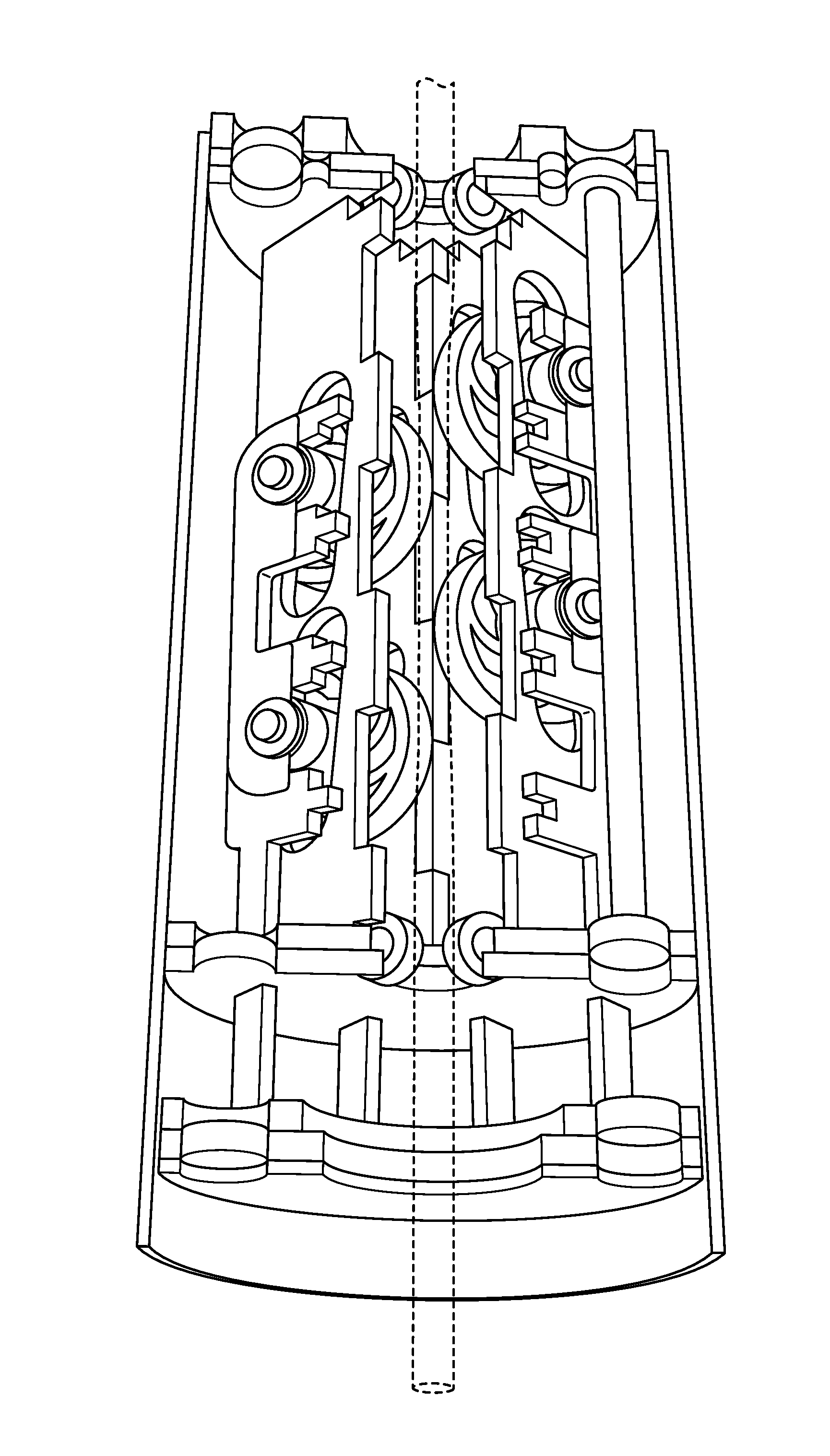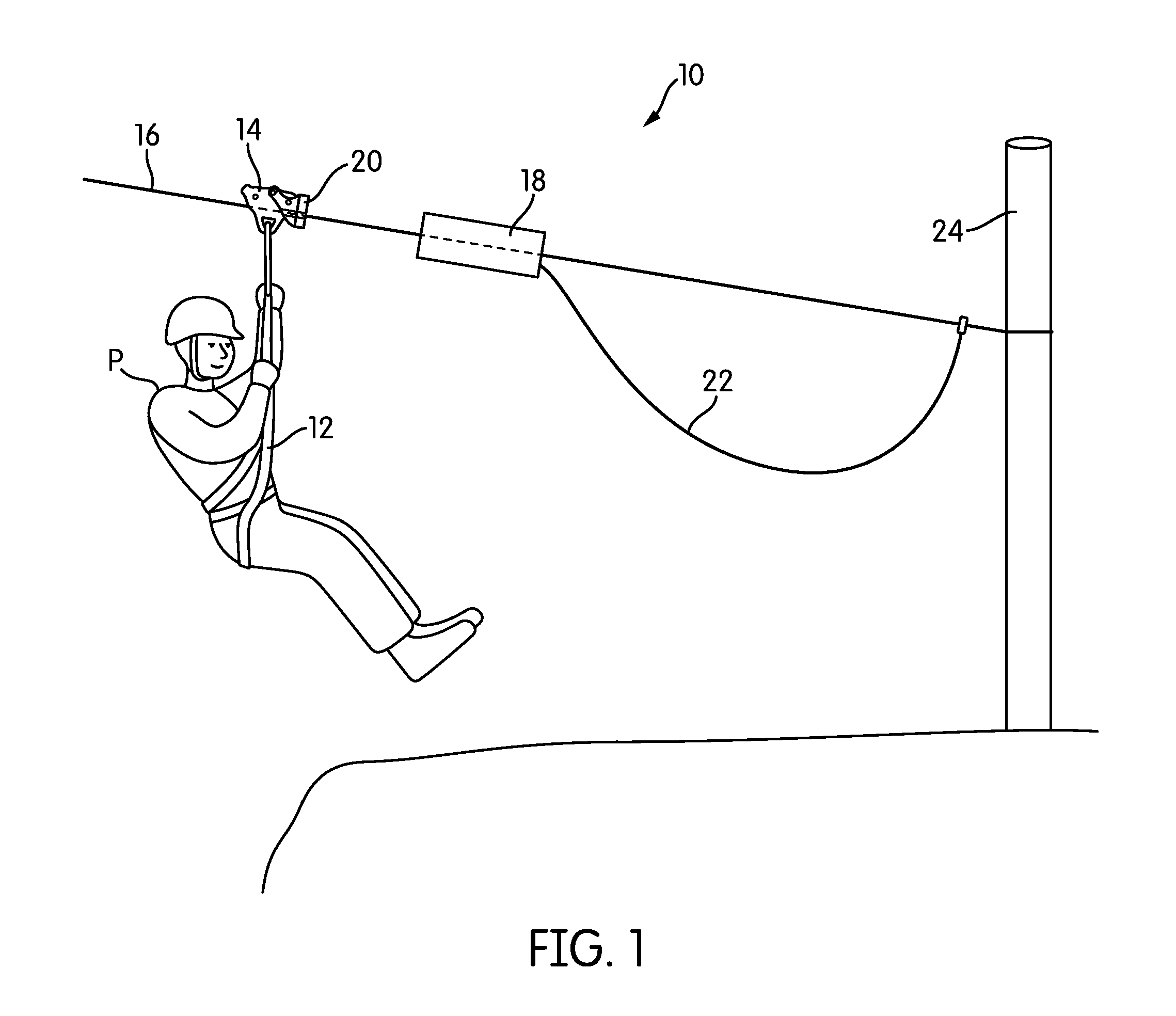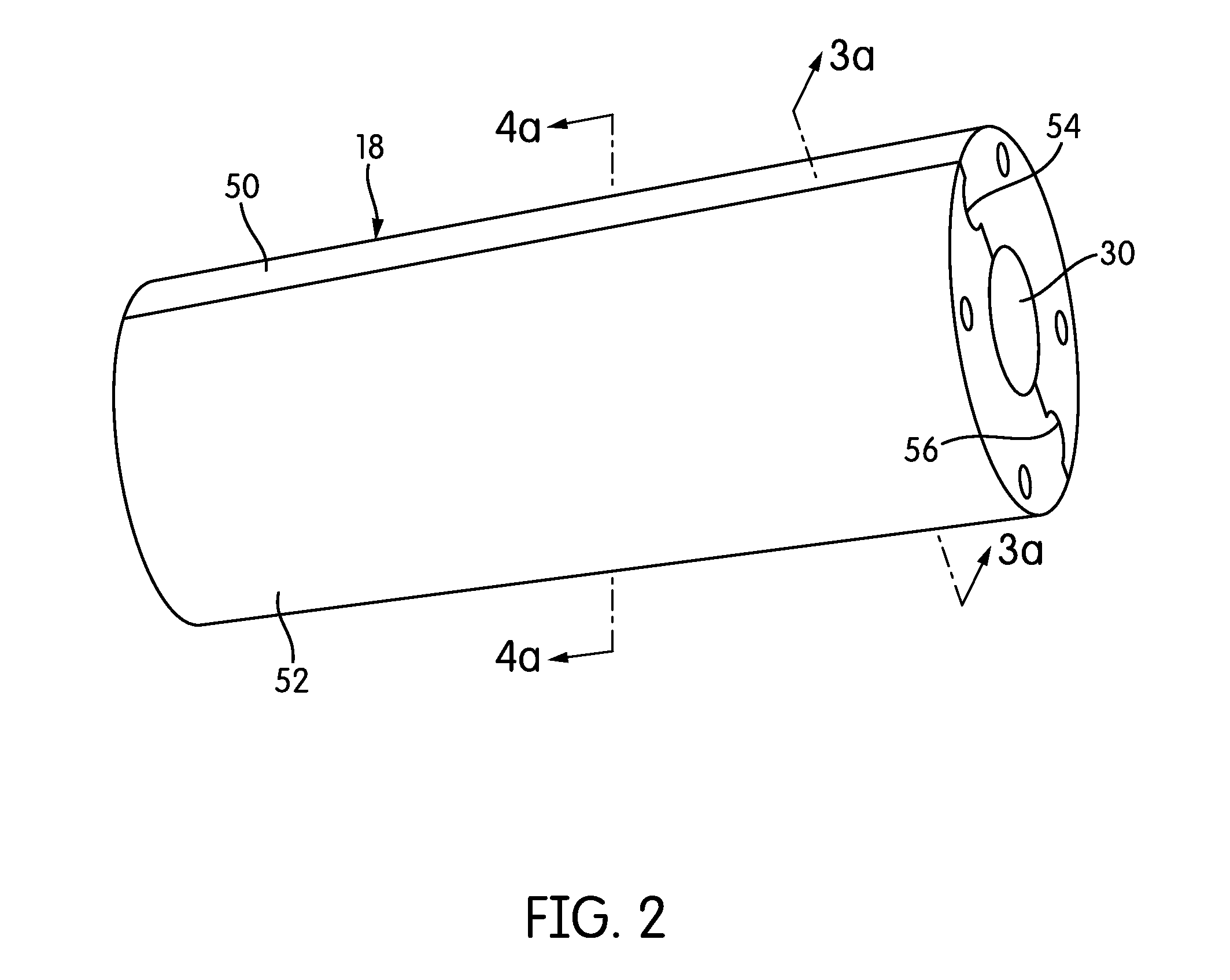Brake and Capture System for Zip Lining
- Summary
- Abstract
- Description
- Claims
- Application Information
AI Technical Summary
Benefits of technology
Problems solved by technology
Method used
Image
Examples
Embodiment Construction
[0028]FIG. 1 is a perspective view of a capture and braking system according to an embodiment of the invention, generally indicated at 10, in use. As shown in FIG. 1, a passenger P is attached by way of a harness 12 to a trolley 14 that rides on a zip line 16. Positioned on the zip line 16 is a brake 18. The trolley 14 includes an engaging mechanism 20 that connects to and engages with the brake 18 when the two 18, 20 come into contact with one another, as will be described below in more detail.
[0029]As shown in FIG. 1, the brake 18 is connected by a rope or line 22 either to the zip line 16 itself or to a zip line support 24 at the end of the zip line 16. The arrangement of the brake 18 and the line 22 is such that the brake 18 can be thrown or slid out along the zip line 16 some distance away from the support 24, so that the trolley 14 will contact the brake 18 some distance before the end of the zip line 16, giving the brake 18 time and space to slow and stop the trolley 14 and t...
PUM
 Login to View More
Login to View More Abstract
Description
Claims
Application Information
 Login to View More
Login to View More - R&D
- Intellectual Property
- Life Sciences
- Materials
- Tech Scout
- Unparalleled Data Quality
- Higher Quality Content
- 60% Fewer Hallucinations
Browse by: Latest US Patents, China's latest patents, Technical Efficacy Thesaurus, Application Domain, Technology Topic, Popular Technical Reports.
© 2025 PatSnap. All rights reserved.Legal|Privacy policy|Modern Slavery Act Transparency Statement|Sitemap|About US| Contact US: help@patsnap.com



